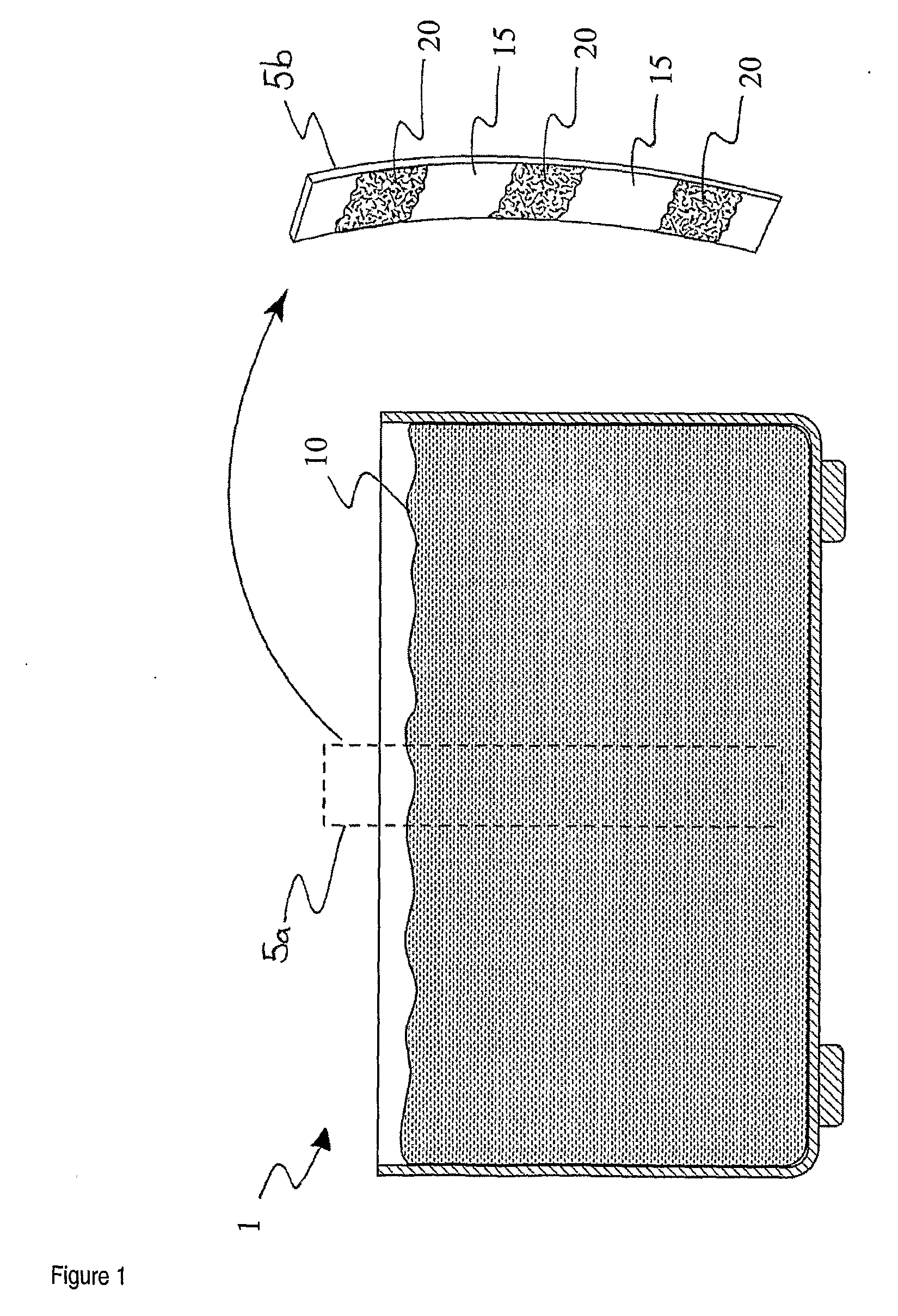Methods and apparatus for ultrasonic cleaning
a technology of ultrasonic cleaning and apparatus, which is applied in the direction of washing process, cleaning using liquids, antibody medical ingredients, etc., can solve the problems of reducing the efficiency of equipment, reducing the quality of products, and reducing the life of equipment, containers and packaging, etc., and facilitating further cavitation, the effect of enhancing fluid entry
- Summary
- Abstract
- Description
- Claims
- Application Information
AI Technical Summary
Benefits of technology
Problems solved by technology
Method used
Image
Examples
example 1
Tartrate Removal and Brettanomyces Reduction in Oak Wine Barrels
[0161]Conventional ultrasonic technology is ineffective for tartrate removal and Brettanomyces reduction on oak staves contaminated with the same amount of tartrate and Brettanomyces organism compared to the methods and apparatus of the present invention. 2 inch oak coupons were contaminated at 2 mm depth with known amount / concentration counts of Brettanomyces microorganisms were placed in a 10 litre water bath at 40°. The contaminated coupons were sonicated using the three different methods shown in the table below for 1 minute. Coupons were then removed and plated.
TABLE 1Tartrate removal and Brettanomyces reduction% SurfaceBrett,tartratekillremoval (102 mm inSonotrode typeminutes)oak1Conventional sonotrode for liquid immersion0%2Conventional ultrasonic cleaning - bath 0%0%3Highly propagating ultrasonic energy100% 100%
[0162]Table 1 clearly shows the increased efficacy of the ability of the method of the present invent...
example 2
Biofilm Removal
[0164]An apparatus of the present invention was used to treat a 700 mm diameter pipe. A Proteus mirabilis biofilm was present on the internal surface of the pipe and Listeria sp, were known to be a component of the biofilm. The pipe was filled with water and an apparatus of the invention introduced into the water such that when operated highly propagating ultrasonic energy propagates through the liquid and is applied to the internal surface of the pipe.
TABLE 2Biofilm removalUltrasonic Frequency% Bio-film Removal350kHz33%150kHz56%33kHz68%20kHz100%
[0165]As shown in Table 2, highly propagating ultrasonic energy at wavelengths of 350 kHz, 150 kHz, 33, kHz and 20 kHz was tested and it can be seen that ultrasonic energy of 20 kHz results in 100% biofilm removal. The highly propagating ultrasonic energy was applied to the biofilm for 1 minute.
[0166]The use of hot water at 85° C. with a caustic agent typically shows less than 90% reduction in biofilm reduction which results i...
example 3
Brettanomyces Reduction in Oak Surfaces
[0167]Using laboratory-infected oak blocks attached to the staves of barrels allowed testing to be performed under controlled conditions and enabled comparison of the treatments against controls. Blocks were cut from new American oak staves, as well as uninfected and tartrate-free staves of used one and three-year old American oak barrels previously cleaned by high pressure hot water. The sterilised blocks were infected by suspending them in an actively growing liquid culture of Dekkera bruxellensis strain AWRI 1499 (Brettanomyces).
[0168]A commercial standard static spray head was used to deliver HPHW (1000 psi / 60° C.) or MPHW (70 psi / 60° C.) through the bung-hole of the barrel. A water temperature of 60° C. was chosen as the benchmark as it is the most commonly used temperature in the wine industry. A highly propagating ultrasonic energy apparatus was used to apply highly propagating ultrasonic energy to the surface of the infected oak blocks ...
PUM
| Property | Measurement | Unit |
|---|---|---|
| pressure | aaaaa | aaaaa |
| pressure | aaaaa | aaaaa |
| depth | aaaaa | aaaaa |
Abstract
Description
Claims
Application Information
 Login to View More
Login to View More - R&D
- Intellectual Property
- Life Sciences
- Materials
- Tech Scout
- Unparalleled Data Quality
- Higher Quality Content
- 60% Fewer Hallucinations
Browse by: Latest US Patents, China's latest patents, Technical Efficacy Thesaurus, Application Domain, Technology Topic, Popular Technical Reports.
© 2025 PatSnap. All rights reserved.Legal|Privacy policy|Modern Slavery Act Transparency Statement|Sitemap|About US| Contact US: help@patsnap.com



